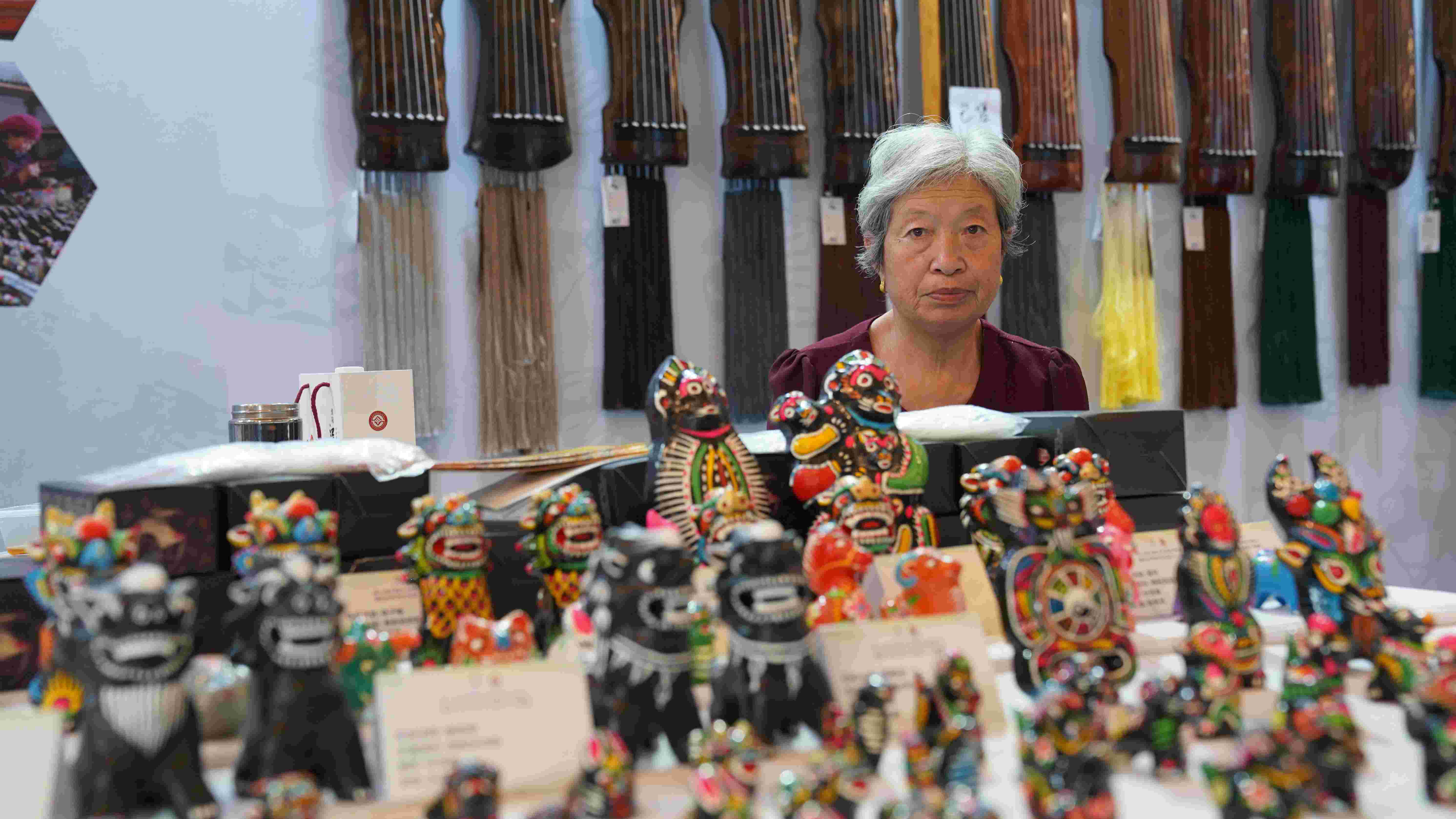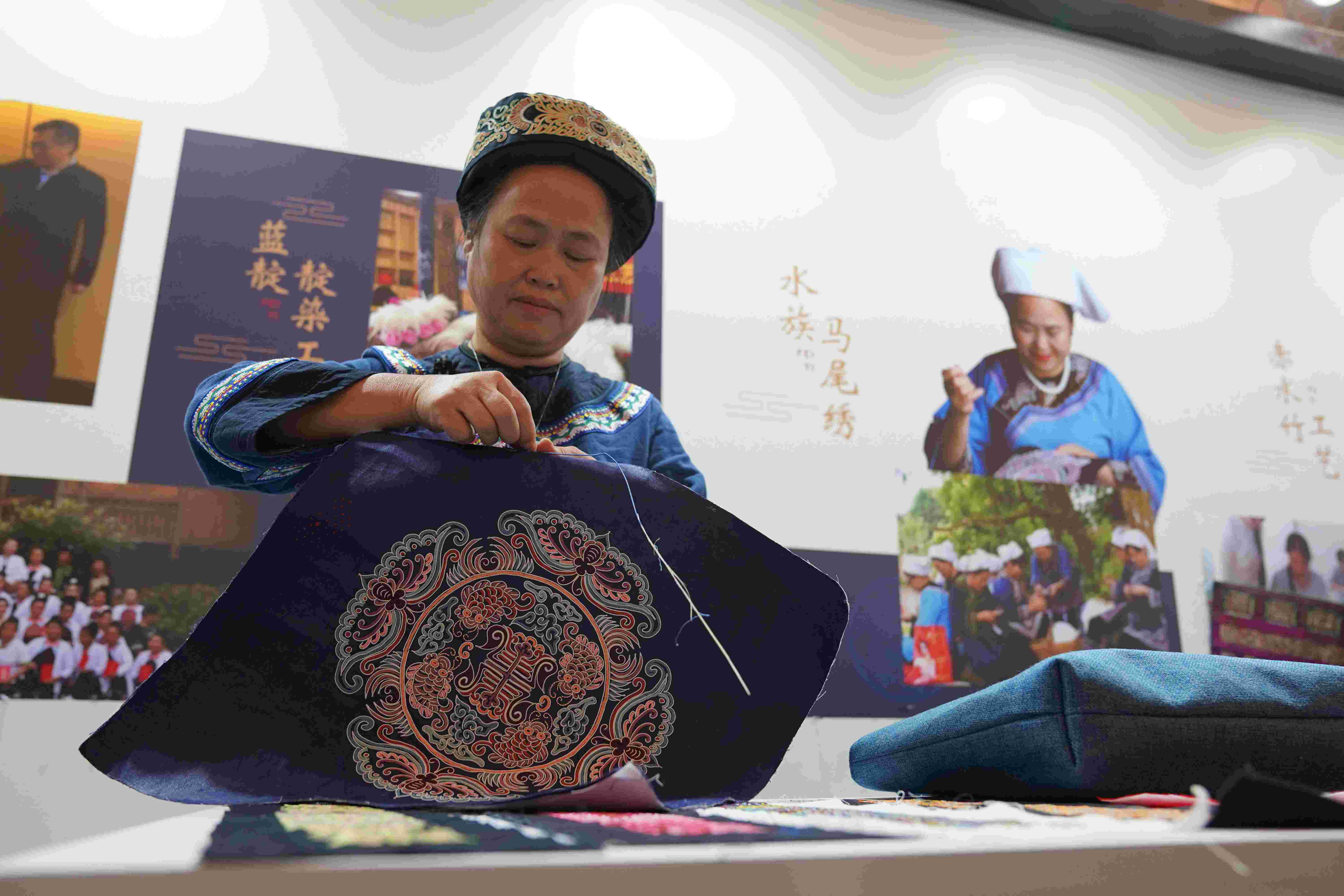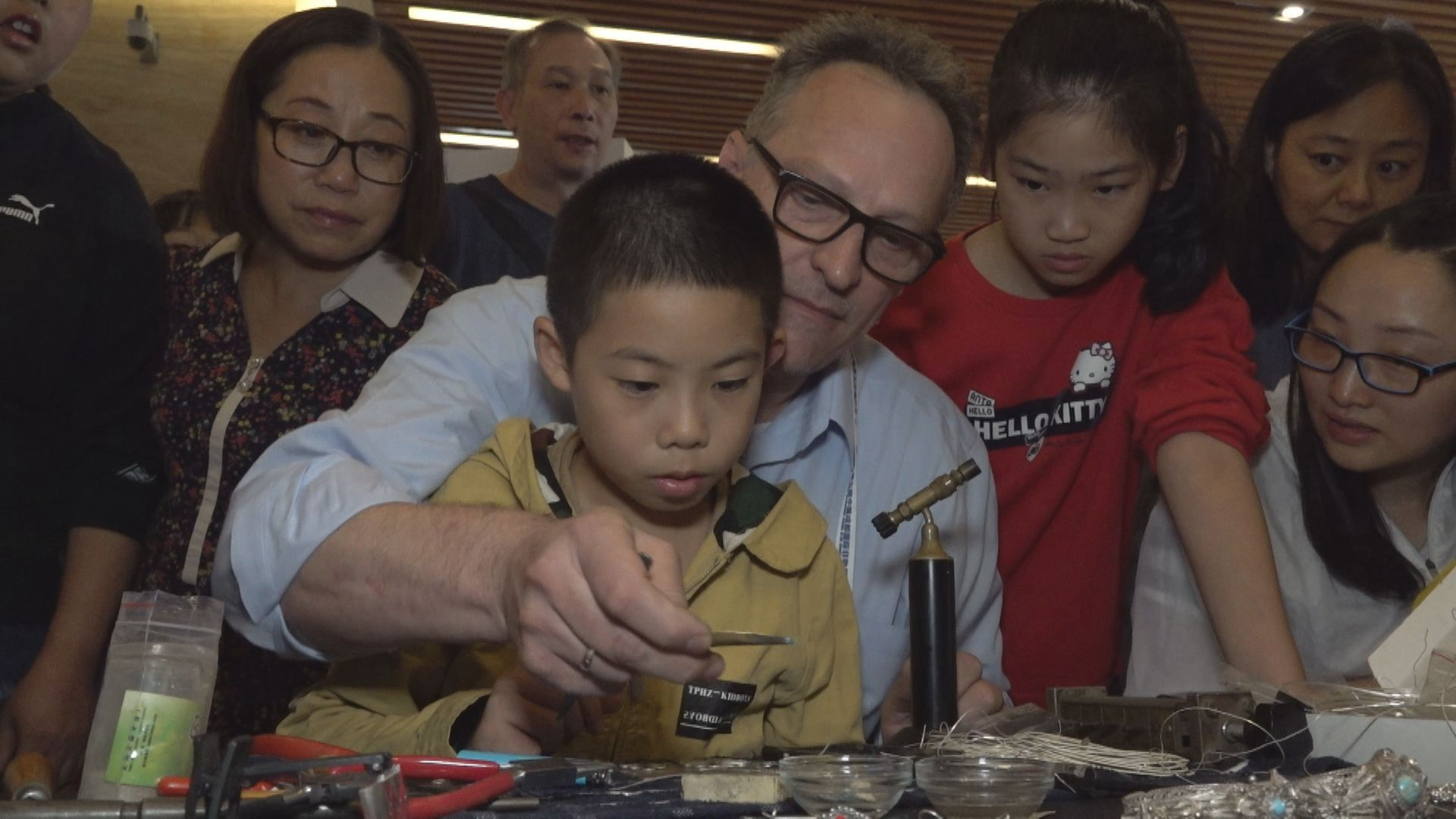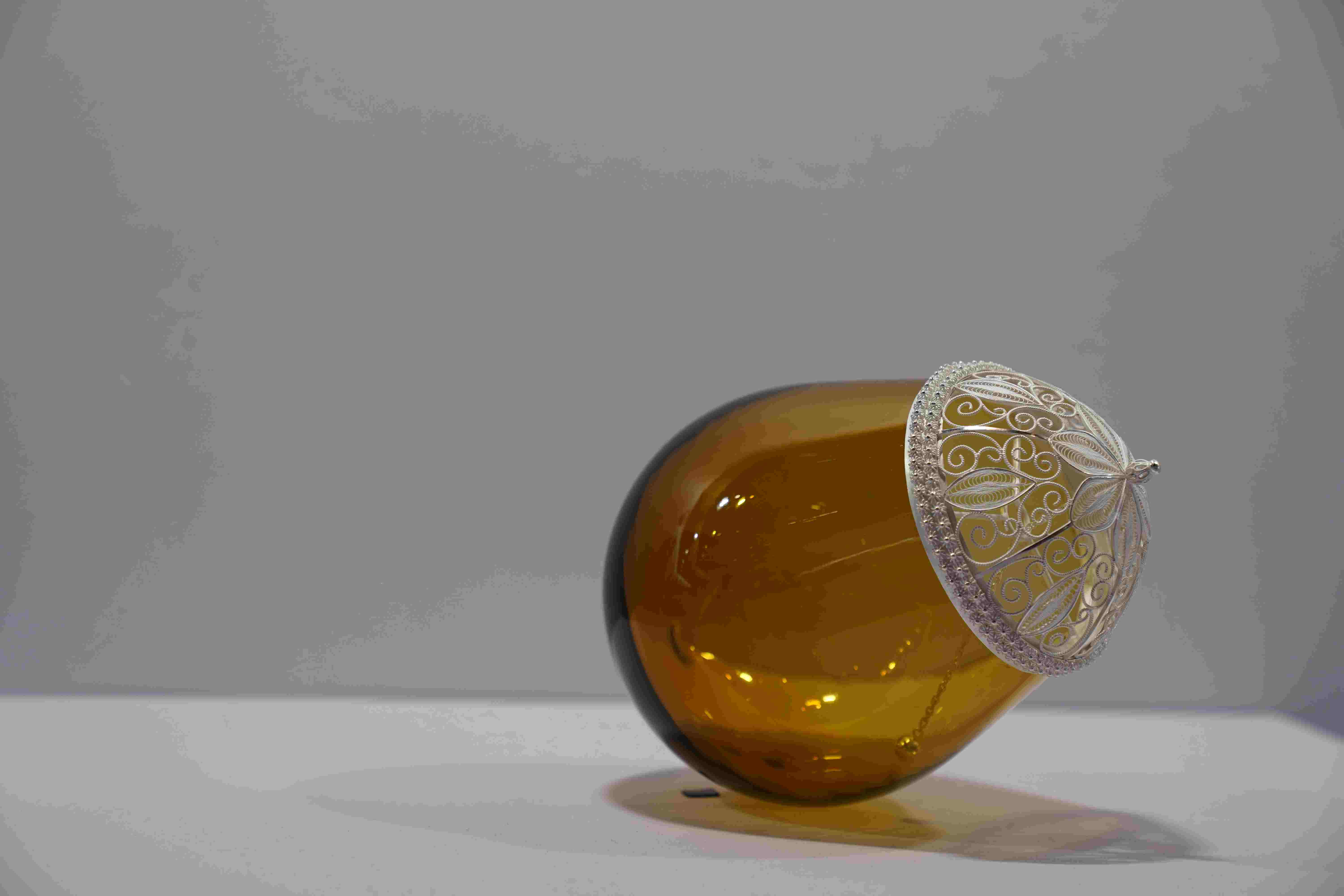03:23

An international festival of intangible cultural heritage underway in the southwestern Chinese city of Chengdu has charmed the visitors and served as a bridge for cultural exchanges.
The seventh of these biennial events features various items of intangible cultural heritage, including handicrafts, performing arts and culinary skills. An important subject of this year's festival is how the development of the precious heritages has contributed to poverty alleviation in China.
Song Shuixian is one of the craftsmen who come to the grand gathering to promote their own cultural treasures. She brings a kind of unique embroidery that uses horsetail as material, which is popular among China's Shui ethnic group in southwest China.
"Our horsetail embroidery has a strong three-dimensional effect, just like reliefs. And it's solid and durable," said Song, who has devoted herself to preserving the time-honored craft over the past three decades and has been recognized as a national-level inheritor.

Song Shuixian, a national-level inheritor of the "horsetail embroidery," showcases techniques to make the traditional handicraft. /CGTN Photo
Song Shuixian, a national-level inheritor of the "horsetail embroidery," showcases techniques to make the traditional handicraft. /CGTN Photo
Craftsmen from dozens of countries are demonstrating their special handicrafts and art works, such as traditional Maori weaving from New Zealand, silver filigree craft from Serbia and Denmark's paper cutting and Myanmar traditional string puppets.
"This kind of festival promotes cooperation and we have much to learn from each other. We usually think that our differences are big, but actually they are not. We have to push forward to make a step to each other and to exchange our experiences," Goran Ristovic Pokimica from Serbia told CGTN.
He was echoed by Pip Devonshire, who specializes in traditional Maori weaving.
"I can see the bamboo is manipulated in a similar way that we manipulate our harakeke fibers. I think we could learn a lot by sharing the knowledge that we have that relates to our unique cultural identity," said Devonshire.

Goran Ristovic Pokimica, a craftsman from Serbia, teaches a child to make silver filigree. /CGTN Photo
Goran Ristovic Pokimica, a craftsman from Serbia, teaches a child to make silver filigree. /CGTN Photo
Speaking of cooperation, 13 special pieces of art are on display at this festival. Each was jointly created by a French craftsman and a Chinese counterpart, presenting a mixed style.
"By integrating different traditional handicrafts from the two countries, we hope such a project can bring new ideas to our craftsmen and inspire them to create more fantastic works in the future," said Zhang Jingming, curator of the exhibition entitled "Valuable Chimera."

A piece of work jointly created by a French craftsman and a Chinese counterpart is exhibited at the festival. /CGTN Photo
A piece of work jointly created by a French craftsman and a Chinese counterpart is exhibited at the festival. /CGTN Photo
A series of forums are also being held on the sidelines of the event, with topics ranging from how intangible cultural heritage can promote tourism development, and how to better protect the valuable traditions by integrating them into modern life.
Looking to the future, Song said as a national-level inheritor, she would take the responsibility of making every effort to pass on the techniques to younger generations, and explore more business opportunities by taking advantage of modern technologies, making their precious embroidery a greater impetus for a better development of her hometown.
(Cover: A craftswoman shows her clay figurines at the event. /CGTN Photo)